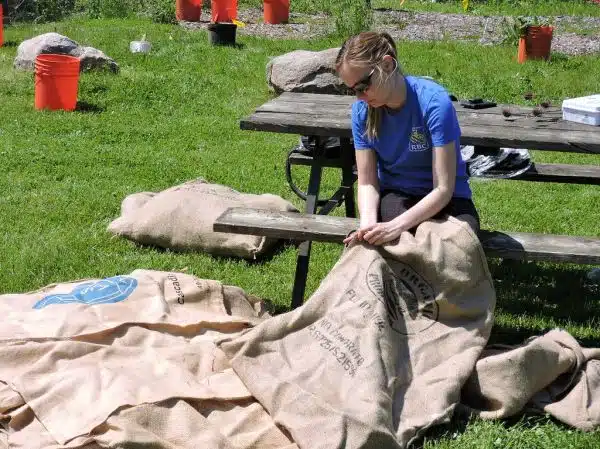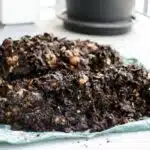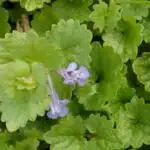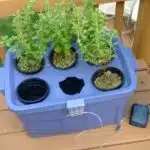Mulch is an essential component for maintaining a healthy garden. It helps to retain soil moisture, suppress weed growth, and improve the overall appearance of your garden beds. However, purchasing mulch can be expensive and may not fit into everyone’s budget. Fortunately, there are several ways to obtain free mulch by using local resources that would otherwise go to waste.
In this article, we will explore five different sources of free mulch and provide tips on how to obtain it. Whether you are an avid gardener or simply looking for ways to save money on landscaping costs, this guide will help you find the resources you need to keep your garden healthy and thriving without breaking the bank. By utilizing these resources, not only will you be able to save money on mulch but also contribute towards reducing waste in your community.
The Importance Of Mulch For Gardening
Mulching is a critical component of gardening that provides numerous benefits to plants and the soil. Mulch is any material, organic or inorganic, used to cover the soil’s surface around plants. The primary purpose of mulching is to conserve moisture by limiting evaporation from the soil. It also helps suppress weed growth and regulates soil temperature, keeping it cool in hot weather and warm during cold conditions.
There are two main types of mulch: organic and inorganic. Organic mulches include materials such as leaves, grass clippings, wood chips, straw, and compost. They decompose over time, adding nutrients to the soil while improving its structure and fertility. Inorganic mulches comprise materials like rocks, gravel, black plastic sheeting, or landscape fabric. They do not break down as quickly as organic mulch but offer long-lasting protection against weed growth.
The benefits of using mulch go beyond water conservation and weed suppression. Mulching also improves the overall health of plants by maintaining an even moisture level around their roots while protecting them from extreme temperatures. A layer of mulch can reduce erosion caused by rainfall or wind while preventing soil compaction from heavy foot traffic. Gardeners should consider incorporating mulching into their gardening routine to reap these benefits for their plants’ health and well-being.
By using free mulch instead of purchasing it from stores, gardeners can save money while still enjoying all the advantages that come with this essential technique in gardening.
Benefits Of Using Free Mulch
Mulching is a cost effective way to improve soil fertility and reduce the need for fertilizer. Free mulch is available from a variety of sources, including municipal waste and recycling centers, tree trimming services, and garden centers. Using free mulch can provide significant cost savings, as well as improved water retention, aeration, and microbial activity in the soil. Finally, mulching with organic material can help to improve soil fertility by providing essential nutrients to the soil.
Cost Savings
The advantages of using free mulch are numerous, and cost savings is one of the most significant benefits. With the rising costs of gardening supplies, getting free mulch can help you save a considerable amount of money. Mulching your garden beds keeps the soil moist, reduces weed growth, and adds nutrients to the soil. These benefits translate into savings on water bills and herbicides, as well as a reduction in fertilizer expenses.
One disadvantage of using free mulch is that it may not be as effective as commercially produced mulch. Free mulch can contain weed seeds or pests that may harm your plants. Additionally, it may take longer for free mulch to break down and release nutrients into the soil than commercial products. However, these disadvantages can be mitigated by taking precautions such as screening the mulch before use and monitoring its effectiveness.
Overall, using free mulch offers significant cost savings while providing numerous benefits to your garden. By sourcing your mulch from five different sources such as tree trimming services or local government agencies, you can ensure that you have an abundant supply of quality organic matter for your garden beds throughout the year. With proper use and care, free mulch can provide long-lasting improvements to your garden’s health and vitality without breaking the bank.
Improved Soil Fertility
Mulch application is an indispensable practice in gardening as it provides numerous benefits to the soil and plants. One of the primary advantages of using free mulch is improved soil fertility. Mulch acts as a soil amendment that enriches the soil with organic matter, which is essential for plant growth. As the mulch breaks down, it releases nutrients into the soil, such as nitrogen, phosphorus, and potassium, which are vital elements for healthy plant development.
Mulch application also enhances soil structure by improving its water-holding capacity and reducing erosion caused by wind or rain. The mulch layer holds moisture and prevents evaporation, keeping the soil moist for longer periods. This feature reduces watering frequency and conserves water resources while promoting plant growth. Additionally, by reducing erosion, mulching helps maintain healthy topsoil layers that provide a fertile environment for root growth.
Furthermore, free mulch offers an eco-friendly solution for gardeners who are concerned about sustainability practices. Rather than purchasing expensive commercial fertilizers that may contain harmful chemicals or synthetic materials, free mulch provides an organic alternative that promotes healthy soil and plant life without damaging the environment. By adopting this approach to gardening practices through free mulching application, gardeners can enjoy sustainable benefits while creating a beautiful landscape that supports biodiversity in their communities.
Municipal Composting Programs
According to a recent study, the United States generates over 267 million tons of solid waste each year. Of this massive amount, food scraps and yard debris make up about 30% of the total waste stream. Municipal composting programs have emerged as a promising solution to help reduce the amount of organic waste that goes into landfills.
One of the benefits of municipal composting programs is that they provide free mulch for residents. Mulch is an essential ingredient in gardening and landscaping projects as it helps improve soil quality, retain moisture, and suppress weed growth. By using free mulch from municipal composting programs, residents can save money and reduce their carbon footprint at the same time.
However, there are also some drawbacks to municipal composting programs. One potential impact is odor issues that may arise during the composting process, which can be unpleasant for nearby residents. Another issue is that these programs require significant financial investments and resources to operate effectively. Nonetheless, many cities have found that investing in these programs can create jobs in the local economy while simultaneously reducing greenhouse gas emissions.
As we have seen, municipal composting programs offer both benefits and drawbacks when it comes to providing free mulch for residents. While some may be concerned about potential environmental impacts or costs associated with these initiatives, others see them as an opportunity to support sustainable practices and contribute positively to local communities. In the next section, we will explore another source of free mulch: tree trimming and removal services.
Tree Trimming And Removal Services
Tree disposal is an important task that needs to be done properly to avoid environmental hazards. When it comes to tree trimming and removal services, make sure to choose a reputable company that offers ethical and sustainable practices. These companies can help you dispose of your unwanted trees in a responsible manner while also providing you with free mulch delivery.
Mulch is a great way to retain soil moisture, suppress weeds, and improve soil health. Many tree trimming and removal services offer free mulch delivery as part of their service package. This not only helps you dispose of your unwanted trees but also provides you with a valuable resource for your landscaping needs. Just make sure that the mulch has been properly aged before using it in your garden.
When selecting a tree trimming and removal service, make sure to ask about their mulching practices. Some companies may use harmful chemicals or diseased wood in their mulch production, which can be detrimental to your garden’s health. Choose a company that uses sustainable and organic methods for their mulching practices.
- Look for companies that offer free mulch delivery as part of their service package.
- Choose a company with ethical and sustainable practices for tree disposal.
- Make sure the mulch has been properly aged before using it in your garden.
- Ask about the company’s mulching practices to ensure they are organic and sustainable.
- Select a reputable company with positive reviews from previous customers.
With the help of tree trimming and removal services, disposing of unwanted trees can be done sustainably while also providing you with free resources for your landscaping needs. However, it is important to choose a reputable company with ethical practices when it comes to tree disposal and mulching. In the next section, we will discuss how landscaping companies can also provide valuable resources for your gardening needs.
Landscaping Companies
Landscaping companies are one of the primary sources for free mulch. These companies often have an abundance of organic waste from tree trimming, pruning, and other maintenance tasks. This organic waste is then processed into wood chips, which can be used as mulch in landscaping projects. The benefits of using this type of mulch include weed suppression, moisture retention, and soil temperature regulation.
To find these sources, start by contacting local landscaping companies and ask if they offer free wood chips or mulch. Some companies may require that you pick up the material yourself or pay a small fee for delivery. It’s also important to note that not all landscaping companies will have wood chips available at all times, so it may be necessary to check back periodically.
In addition to being a cost-effective option for homeowners and landscapers alike, obtaining free mulch from landscaping companies also has environmental benefits. By reusing organic waste instead of sending it to landfills, we can reduce methane emissions and promote sustainability in our communities. With a little effort and research, anyone can take advantage of this valuable resource for their gardening and landscaping needs.
Transition: While landscaping companies are a great source for free mulch, there are other options available as well. Local farms and stables are another potential source for obtaining organic materials that can be used as mulch in landscaping projects.
Local Farms And Stables
Landscaping companies are not the only source of free mulch. Local farms and stables can also be a great resource for obtaining natural, organic mulch. These places produce large amounts of equine waste and crop residue that can be turned into nutrient-rich compost.
Composting at local farms and stables is a sustainable way to manage waste while producing beneficial soil amendments. Farmers and stable owners often have piles of composting material available for free or at a low cost. This compost can be used as mulch in gardens and landscaping projects, providing a healthy environment for plants to grow.
Furthermore, supporting local farms and stables by utilizing their composting resources not only helps reduce waste but also promotes sustainable agriculture practices. By using their compost, we are helping to close the loop on the food system by returning nutrients back to the soil where they belong. So next time you’re in need of some mulch, consider checking with your local farms and stables for their composting resources.
Looking beyond landscaping companies and local farms/stables, city parks and recreation departments are another potential source of free mulch that shouldn’t be overlooked. These organizations often offer free wood chips or shredded tree trimmings from park maintenance projects. These materials can be used as an alternative to traditional mulch in landscaping projects, while also supporting sustainable forestry practices through recycling wood waste.
City Parks And Recreation Departments
In the quest for free mulch, one source that is often overlooked is city parks and recreation departments. These departments are responsible for maintaining public parks and green spaces in your city, which means they have a steady supply of organic material such as leaves, grass clippings, and branches. Many cities offer free mulch to residents through their parks and recreation department.
However, it’s important to note that city park restrictions may limit the amount of mulch you can take at a time. Some cities allow residents to take up to five bags per day, while others have no limit at all. Additionally, some parks may only have mulch available during certain times of the year, so it’s important to check with your local department beforehand.
If your city has strict limitations on how much mulch you can take from its parks and recreation department or if there is no availability at all, there are alternative collection methods. For example, you can contact local tree removal companies or landscaping businesses to see if they have any extra wood chips or mulch that they would be willing to give away for free. Another option is to search online classifieds or social media groups where people often give away free items such as mulch.
Moving forward, construction sites are another potential source of free mulch that many people overlook. When building or renovating a property, contractors often have excess organic material that they need to dispose of quickly. This means that they may be willing to give it away for free instead of paying for disposal fees. Keep an eye out for construction sites in your area and inquire about any available organic material – you never know what treasures you might find!
Construction Sites
Building materials are an essential part of a construction site. In order to ensure proper regulation compliance, building materials must be disposed of properly. Hazardous waste, including construction materials, must be disposed of according to regulations and standards set by the environmental protection agency. Acquisition of free mulch from construction sites can be a cost effective way to get materials for landscaping or gardening. Sources for free mulch from construction sites include sawdust, wood chips, and composted soil. Companies that specialize in demolition or tree removal services may offer free mulch for their customers. Local hardware or home improvement stores may also provide free mulch to customers.
Building Materials
Are you looking for cost-effective ways to obtain building materials? You may want to consider visiting construction sites. Not only can you find a variety of materials there, but you can also help reduce waste and save money. One option is to look for scrap wood that can be reused or repurposed. This material can be used for various DIY projects such as shelves, birdhouses, or even furniture.
Another option is to salvage old bricks. Reusing old bricks can add character and charm to your home, garden or patio. It’s not uncommon to find piles of old bricks on construction sites waiting to be disposed of. With a little bit of effort and creativity, you could turn these discarded materials into a beautiful walkway or retaining wall.
Lastly, aside from obtaining materials from construction sites, another way to save money on building supplies is by shopping secondhand stores or online marketplaces like Craigslist or Facebook Marketplace. These platforms offer a wide range of affordable options for those who are willing to put in the time and effort to search for them. In summary, with some ingenuity and resourcefulness, it’s possible to obtain quality building materials without breaking the bank.
Hazardous Waste
Construction sites are known to be a potential source of various building materials that can be repurposed or reused. However, it is important to note that some materials found in these sites may pose serious health and environmental hazards if not handled properly. Hazardous waste, such as chemicals, asbestos, and lead-based paints, are commonly found in construction sites and must be disposed of properly to avoid harming people and the environment.
Proper disposal of hazardous waste is crucial in preventing adverse effects on human health and the environment. The Environmental Protection Agency (EPA) mandates strict guidelines for the handling, transport, and disposal of hazardous materials. Construction companies are required to follow these regulations to ensure that they do not put anyone at risk. It is also essential for individuals who plan to obtain materials from construction sites to follow proper safety protocols before handling any hazardous material.
The environmental impact of improper disposal of hazardous waste can be severe. It can contaminate soil, water sources, and air quality leading to long-term ecological damage. To mitigate this impact, it is necessary for construction companies and individuals alike to prioritize proper disposal methods for all types of waste produced on construction sites. By doing so, we can reduce the negative effects on both human health and the environment while still being able to obtain quality building materials through sustainable means.
Regulation Compliance
Regulation compliance is an essential aspect of any construction project. In the context of construction sites, adherence to regulations ensures that hazardous waste is safely disposed of, and workers are not exposed to potentially harmful substances. With the Environmental Protection Agency (EPA) mandating strict guidelines for the handling, transport, and disposal of hazardous materials, it is crucial that construction companies take regulation compliance seriously.
Proper storage and disposal of hazardous waste are necessary to prevent adverse environmental impacts. The failure to comply with regulations can contaminate soil, water sources, and air quality leading to long-term ecological damage. It can also pose a significant risk to public health by exposing people to toxic substances. To mitigate these risks and ensure proper regulation compliance on construction sites, companies must prioritize safety protocols in material handling.
In conclusion, regulation compliance is vital for ensuring safe and sustainable practices on construction sites. By following EPA guidelines for the handling, transport, and disposal of hazardous materials, we can reduce negative environmental impacts while protecting worker safety. As freelance research and writing specialists, it is our responsibility to highlight the importance of proper regulation compliance in all aspects of construction projects.
How To Properly Store Mulch
Construction sites are one of the most accessible sources of free mulch. However, it is essential to check if they use treated wood products as mulch. These can contain harmful chemicals that may harm your plants and soil. If you’re unsure, it’s best to avoid using them.
Once you’ve acquired your free mulch, proper storage is necessary to preserve its quality. One key factor in proper mulch storage is keeping it dry. Moisture can promote mold growth and attract pests, which can render the mulch unusable. You can store it in a covered area or under a tarp to keep it dry.
Mulch preservation techniques can also help extend its lifespan. Turning the pile regularly helps distribute moisture and heat evenly throughout the pile, preventing mold growth and keeping the temperature regulated. Additionally, adding nitrogen-rich materials like grass clippings or manure can accelerate decomposition and produce nutrient-rich compost.
Proper mulch storage and preservation techniques are crucial in ensuring that your free mulch stays usable for longer periods. However, before you apply them to your garden beds or landscaping projects, you need to transport them safely without causing any damage or accidents. Here are some tips for transporting mulch without making a mess or damaging your vehicle: 1. Use a tarp or plastic sheet to cover the floor and seats of your vehicle to prevent the mulch from spilling or staining.
Tips For Transporting Mulch
- In order to successfully transport mulch, it is important to have the right tools such as a tarp, shovel, rake, and wheelbarrow.
- Securing the mulch is essential to ensure that it stays in place and doesn’t cause any mess during transport.
- Suggested techniques for securing the mulch include tying it down with bungee cords or ropes, or simply placing a tarp over the top.
- Planning the route for transporting mulch can help to save time and energy.
- It is recommended to use a route that avoids obstacles such as traffic and steep hills, and takes into account the size of the vehicle.
- Finally, there are a variety of sources for free mulch including tree trimming services, local landscaping companies, wood chipping services, composting centers, and municipal landfills.
Transporting Tools
Transporting tools when getting free mulch from different sources is crucial to ensure safety while on the road. It is important to follow safety tips and best practices to avoid accidents and injuries. Before transporting your tools, make sure they are secured properly and do not pose a risk of falling off or causing damage to your vehicle.
One of the best practices in transporting tools for mulch collection is to use a sturdy and reliable vehicle. A pickup truck with a cover or a trailer can be an excellent choice as it provides ample space for tools and equipment. Additionally, using bungee cords, tie-down straps, or cargo nets can help keep your tools in place during transport.
It is also essential to inspect your tools regularly before transporting them. Check for any loose parts, sharp edges, or damaged handles that may cause harm during loading and unloading. When carrying heavy equipment, use proper lifting techniques to avoid back strains or other injuries. By following these guidelines for transporting your mulching tools, you can safely collect free mulch from different sources without any mishap.
Securing Mulch
When it comes to mulch collection, ensuring that the tools and equipment are secure during transport is essential for safety. However, securing the mulch itself is just as crucial. Mulch quality can be affected by how it is transported and stored, which can impact its effectiveness in retaining moisture and suppressing weeds. Therefore, it is important to follow best practices when securing mulch to maintain its quality.
One of the primary considerations in securing mulch is choosing the right container or vehicle. A trailer or pickup truck with high sides can help keep the mulch contained during transport, preventing it from spilling onto the road or damaging other vehicles. Additionally, using tarps or covers can further protect the mulch from wind and rain while keeping it secure.
Another important factor in securing mulch is loading it properly. It should be evenly distributed throughout the container or vehicle to ensure balance and stability during transport. Overloading can cause instability and increase the risk of spills or accidents. As with transporting tools, inspecting your equipment regularly for any loose parts or damage can also prevent mishaps on the road.
By following these tips for securing mulch during transport, you can maintain its quality while ensuring safe delivery to your desired location. Properly secured and loaded mulch not only prevents accidents but also helps preserve its benefits for gardening and landscaping projects.
Planning Routes
When it comes to transporting mulch, proper planning of routes is essential to ensure timely and efficient delivery. Route optimization is a vital factor in managing time and resources while minimizing fuel costs. Planning the most efficient route involves considering factors such as distance, traffic patterns, road conditions, and potential hazards.
Effective route planning also helps you identify any necessary stops along the way, such as rest areas or gas stations. These stops can help prevent driver fatigue and allow for necessary breaks to stretch legs or grab a quick snack. Additionally, if multiple locations need mulch deliveries, grouping them together in one trip can save time and fuel costs.
Another consideration when planning mulch transport routes is identifying any weight restrictions or bridge clearances that may impact the type of vehicle you use. Overloading a vehicle or attempting to pass under a low-clearance bridge can cause significant damage to the equipment and its contents. Therefore, research the appropriate weight limits and clearance heights before choosing a specific route for mulch transport.
In conclusion, proper route planning is crucial when transporting mulch to ensure timely delivery while minimizing costs and risks. By optimizing routes, identifying necessary stops, and considering weight restrictions or clearance heights, you can effectively manage time and resources while ensuring safe delivery of your mulch supply.
Best Practices For Using Mulch In Your Garden
Mulching techniques are essential to gardeners as it helps improve soil quality, retain moisture, and suppress weeds. The primary function of mulch is to act as a protective layer on top of the soil. In addition, it also moderates soil temperature and prevents erosion.
One of the most significant benefits of using mulch is that it improves soil fertility. A thick layer of organic material breaks down slowly over time, releasing nutrients into the soil. This process helps create an environment that is conducive to plant growth.
Soil improvement is crucial for any garden, and mulching is one practical way to achieve this goal. Gardeners must choose the right type of mulch for their specific needs and apply it correctly. By following these best practices, gardeners can reap the benefits of healthy plants and a thriving garden.
Mulching Dos And Don’ts
Are you aware of the importance of mulching your garden beds? Mulching is a necessary process that can help improve soil structure, retain moisture, and prevent weed growth. However, improper mulching techniques can harm your plants rather than benefit them. That’s why it’s essential to understand the dos and don’ts of mulching.
Choose the right type of mulch for your plants: Not all plants thrive in the same environment; therefore, it’s imperative to choose the right type of mulch for each plant. For instance, acidic-loving plants like blueberries prefer pine needles or oak leaves as mulch since they lower soil pH levels. On the other hand, hardwood chips are ideal for trees and shrubs because they decompose slowly.
Apply the correct amount of mulch: Applying too much or too little mulch can have adverse effects on your plants’ health. The perfect amount of mulch should be between 2-4 inches deep. If you apply too much mulch, it may prevent water from penetrating into the soil leading to root rot, while applying too little will not provide enough protection against weed growth.
Avoid piling up mulch around plant stems: When adding mulch around plant stems, ensure that you don’t pile it up as this can cause stem rot and attract pests like rodents and insects.
Following these techniques will help you get the most out of your garden beds by providing optimum growing conditions for your plants while preventing weed growth effectively. In conclusion, proper use of organic or inorganic types of mulches is vital when maintaining a healthy garden bed that will yield bountiful crops year after year.
Organic Vs. Inorganic Mulch
Mulching is an essential gardening practice that helps retain moisture, suppress weed growth, and regulate soil temperature. While mulching with inorganic materials such as rocks and pebbles can have some advantages like durability, it also has some significant drawbacks. In contrast, using organic mulch has many benefits.
One of the benefits of organic mulch is that it adds nutrients to the soil as it decomposes. This added organic matter improves soil structure and fertility, which leads to healthier plants. Additionally, organic mulches like wood chips or leaves help to increase water retention in the soil by reducing evaporation rates. This results in less frequent watering needs and saves both time and money.
On the other hand, inorganic mulches can be harmful to plants because they do not break down over time. As a result, they can create a barrier between the soil and air needed for proper plant growth. Moreover, using inorganic mulches like rubber or plastic can contribute to environmental pollution since they do not decompose and are difficult to dispose of properly.
When considering different types of mulch for your garden or landscape project, it’s important to weigh the benefits of organic materials against the drawbacks of inorganic options. Using organic materials like grass clippings or composted manure provides valuable nutrients while improving overall soil health. Meanwhile, inorganic options may offer long-lasting coverage but come with environmental concerns that need to be considered before use. By taking these factors into account and choosing wisely, you can ensure a healthy garden environment for years to come without compromising on sustainability.
Mulch Alternatives To Consider
When it comes to landscaping and gardening, mulch is a popular choice for many homeowners. However, there are other alternatives to consider that can provide similar benefits. Rocks, for example, can be used as a decorative ground cover while also helping to retain moisture in the soil. Straw is another option that can provide insulation for plants and suppress weed growth.
Rocks come in a variety of sizes and colors, making them a versatile option for landscaping. They are particularly useful in areas where water conservation is important as they do not require watering like traditional mulch does. Additionally, rocks can help prevent erosion on hillsides or sloped areas by providing stability to the soil.
Straw is an organic material that can be used as an alternative to traditional mulch. It is particularly useful in vegetable gardens as it helps regulate soil temperatures and retains moisture, which can be beneficial for plant growth. Straw also breaks down over time and adds organic matter back into the soil, improving soil health.
Embracing mulch alternatives such as rocks and straw not only provides benefits for your garden but also promotes environmental sustainability. By reducing the need for traditional mulch made from wood chips or bark, you are decreasing the demand for these materials and promoting a greener future. In the next section, we will discuss how utilizing free sources of mulch can further contribute to this effort.
Conclusion: Embracing Free Mulch For A Greener Future
Mulching is an excellent way to improve the health of your garden and promote sustainable gardening practices. Not only does it help retain moisture in soil, but it also helps regulate soil temperature, suppress weed growth, and prevent soil erosion. Mulch can consist of a variety of materials such as leaves, grass clippings, wood chips, and bark.
By embracing free mulch sources, you not only save money but also contribute to reducing waste in your community. Municipalities often offer free mulch made from recycled yard waste collected from residents. Tree trimming services may also provide free wood chips if requested. Additionally, local farms may provide manure-based compost that can be used as a nutrient-rich mulch.
In conclusion, mulching is an essential practice for any gardener seeking to create a healthy and sustainable garden. By utilizing free mulch sources such as municipal yard waste programs, tree trimming services, and local farms, you not only benefit your garden but also contribute to the reduction of organic waste in your community. Incorporating sustainable gardening practices like mulching into our daily lives can have a lasting impact on the environment and promote a greener future for generations to come.
Conclusion
Mulch is a vital component in maintaining a healthy garden. It helps retain moisture, suppresses weed growth, and regulates soil temperature. While purchasing mulch from a store can be expensive, there are several sources where you can obtain free mulch. Municipal composting programs, tree trimming and removal services, and landscaping companies are some of the sources that offer free mulch.
Using free mulch not only saves money but also contributes to a greener future by reducing waste. However, it is crucial to follow the dos and don’ts of mulching and choose between organic and inorganic options based on your gardening needs. Mulching alternatives like straw or leaves may also be viable options.
In conclusion, don’t let the cost of purchasing mulch deter you from enjoying the benefits of gardening. Take advantage of the various sources that offer free mulch while being mindful of choosing the right type for your garden’s specific requirements. Remember, “Waste not, want not” – utilizing free mulch is an eco-friendly way to beautify your garden while contributing to a sustainable future. As a freelance research and writing specialist, I highly recommend considering these alternative sources when looking for budget-friendly ways to maintain your garden’s health.
Image Credits
- “Cutting up burlap bags to mulch the meadow (2017)” by Grand River Conservation Authority (featured)





























